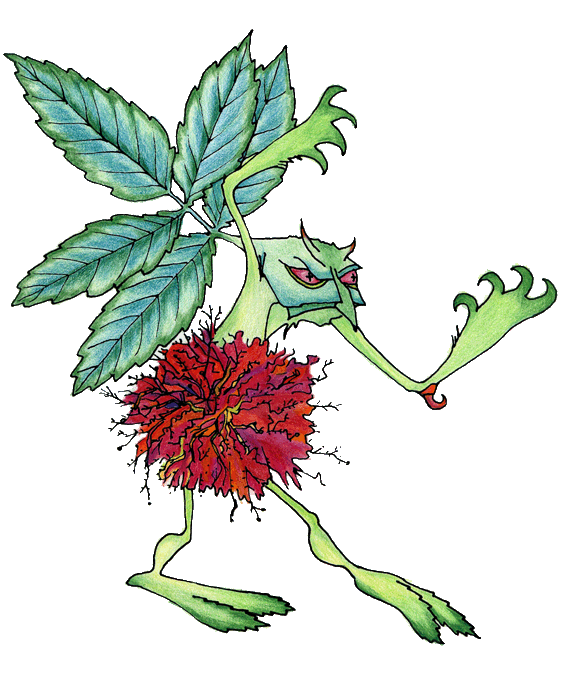During spring 2003 I was able to spend some four months in Belize, Central America. I was actually there to perform some work for my traineeship along the coast of Belize, but luckily it was also possible for me to abandon the coast line every now and then. This is when I was searching for plants and plant galls. The nature of Belize is very rich and diverse and it would take a long time to get familiar with all the groups of species. In the forests I found the most fantastic kinds of plant galls. Many different species and many wonderful shapes. The areas where I made these pictures of plant galls were: Chiquibul Forest, Cockscomb Basin Wildlife Sanctuary, Blue Hole National Park, Belize Zoo, St.Herman's Cave and several locations in Guatemala. I was only able to determine a very small part of the plant species and for the plant galls it was total horror! I owe many thanks to Dr Jon Martin of the Natural History Museum London, for his kindness to help me out with some species. I also want to thank Raphael Manzanero and his friends Theresa, Lenny en Derric of Youth Environmental Action Group and Centre for Tropical Conservation for taking me along to Chiquibul Forest and experiencing the wildlife of Belize in a very special manner. Then, last but not least, I want to thank the people of Las Cuevas Research Centre, for letting me stay and use their facilities, so in this way I was able to learn a lot more about the animal species and families of plants. And most of this only happened in a short week time! If anyone recognizes a gall, or the host plant species, please let me know. Most of them are a big mystery to me. |
 Nederlands
Nederlands
